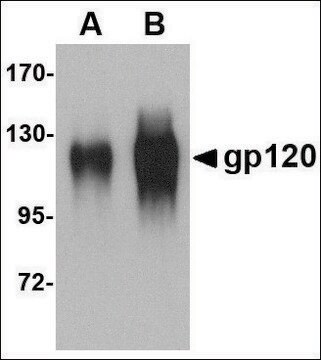SAE0071
HIV-1 GP120 protein
recombinant, expressed in HEK 293 cells
Sinónimos:
Glycoprotein 120 (gp120), Surface protein gp120
About This Item
Productos recomendados
recombinant
expressed in HEK 293 cells
Quality Level
description
low endotoxin
assay
≥95% (SDS-PAGE)
form
lyophilized powder
mol wt
calculated mol wt 55 kDa (The protein migrates as a 100-130 kDa protein on SDS-PAGE due to glycosylation)
impurities
≤1 EU/μg protein endotoxin
UniProt accession no.
storage temp.
−20°C
General description
Biochem/physiol Actions
Physical form
Storage Class
11 - Combustible Solids
wgk_germany
WGK 2
flash_point_f
Not applicable
flash_point_c
Not applicable
Certificados de análisis (COA)
Busque Certificados de análisis (COA) introduciendo el número de lote del producto. Los números de lote se encuentran en la etiqueta del producto después de las palabras «Lot» o «Batch»
¿Ya tiene este producto?
Encuentre la documentación para los productos que ha comprado recientemente en la Biblioteca de documentos.
Nuestro equipo de científicos tiene experiencia en todas las áreas de investigación: Ciencias de la vida, Ciencia de los materiales, Síntesis química, Cromatografía, Analítica y muchas otras.
Póngase en contacto con el Servicio técnico






